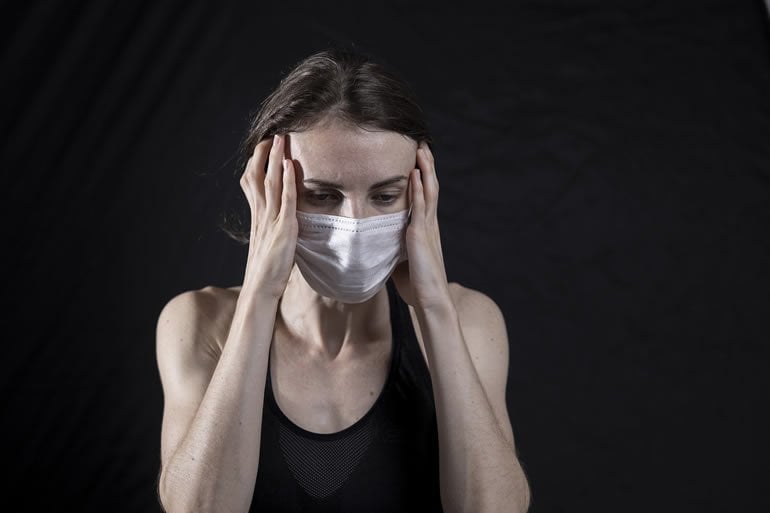Summary: Researchers link the rise in acute stress and depression rates in the U.S to multiple stressors, such as unemployment and coronavirus-related media consumption.
Source: UC Irvine
Experiencing multiple stressors triggered by the COVID-19 pandemic—such as unemployment—and COVID-19-related media consumption are directly linked to rising acute stress and depressive symptoms across the U.S., according to a groundbreaking University of California, Irvine study.
The report appears in Science Advances.
“The pandemic is not hitting all communities equally,” said lead author E. Alison Holman, UCI professor of nursing. “People have lost wages, jobs and loved ones with record speed. Individuals living with chronic mental and physical illness are struggling; young people are struggling; poor communities are struggling. Mental health services need to be tailored to those most in need right now.”
In addition, the research highlights the connection between mental health and exposure to media coverage of the COVID-19 pandemic, suggesting the need to step away from the television, computer or smartphone to protect psychological well-being.
“The media is a critical source of information for people when they’re faced with ambiguous, ongoing disasters,” said Roxane Cohen Silver, professor of psychological science and one of the study’s principal investigators. “But too much exposure can be overwhelming and lead to more stress, worry and perceived risks.”
With funding from a National Science Foundation RAPID grant, Holman, Silver, and co-investigators Dana Rose Garfin and Rebecca R. Thompson conducted a national survey of more than 6,500 U.S. residents in March and April 2020, as illness and deaths were rising around the country.

Using the NORC AmeriSpeak panel, the study was the first of its kind to examine early predictors of rising mental health problems across the nation. The design let researchers evaluate the effects of the pandemic as it was unfolding in real time.
“Over the course of the study, the size of the pandemic shifted dramatically,” Holman said. Accordingly, people surveyed later in the study period reported the highest rate of acute stress and depressive symptoms.
The UCI team’s findings offer insights into priorities for building community resilience in the face of the COVID-19 pandemic:
- Those with pre-existing mental and physical conditions are more likely to show both acute stress and depressive symptoms.
- Secondary stressors—job and wage loss, a shortage of necessities—are also strong predictors in the development of these symptoms.
- Extensive exposure to pandemic-related news and conflicting information in the news are among the strongest predictors of pandemic-specific acute stress.
“It’s critical that we prioritize providing resources to communities most in need of support right now—the unemployed, poor or chronically ill people, and young people,” Holman said. “We also encourage the public to limit exposure to media as an important public health intervention. It can prevent mental and physical health symptoms and promote resilience.”
About this neurology research article
Source:
UC Irvine
Contacts:
Press Office – UC Irvine
Image Source:
The image is in the public domain.
Original Research: Open access
“The unfolding COVID-19 pandemic: A probability-based, nationally representative study of mental health in the U.S” by E. Alison Holman et al. Science Advances.
Abstract
The unfolding COVID-19 pandemic: A probability-based, nationally representative study of mental health in the U.S
The COVID-19 pandemic is a collective stressor unfolding over time, yet rigorous published empirical studies addressing mental health consequences of COVID-19 among large probability-based national samples are rare. Between 3/18-4/18/20, during an escalating period of illness and death in the United States, we assessed acute stress, depressive symptoms and direct, community, and media-based exposures to COVID-19 in three consecutive representative samples across three 10-day periods (total N=6,514) from the U.S. probability-based nationally representative NORC AmeriSpeak panel. Acute stress and depressive symptoms increased significantly over time as COVID-19 deaths increased across the U.S. Pre-existing mental and physical health diagnoses, daily hours of COVID-19-related media exposure, exposure to conflicting COVID-19 information in media, and secondary stressors were all associated with acute stress and depressive symptoms. Results have implications for targeting of public health interventions and risk communication efforts to promote community resilience as the pandemic waxes and wanes over time.






